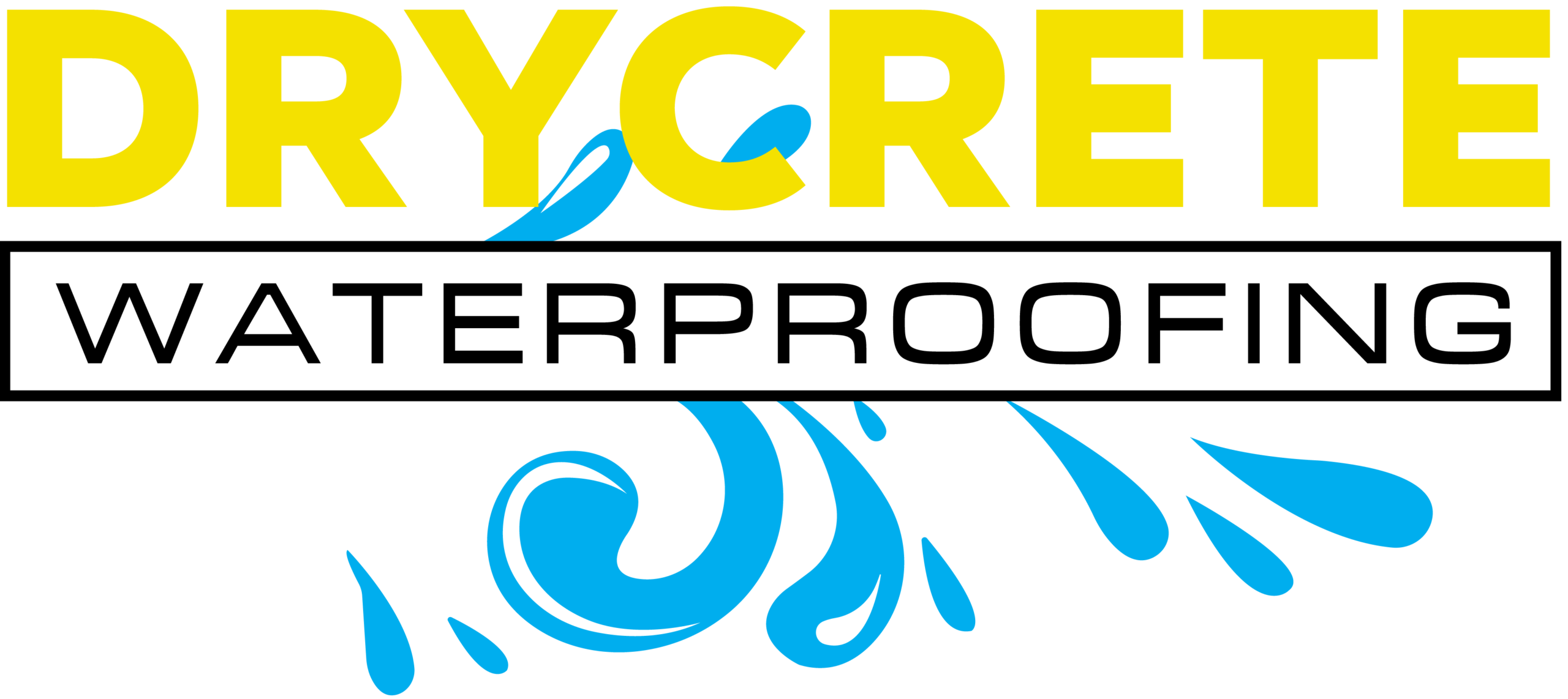Your foundations are vital to the structural stability of your home and water ingress, left unattended, can pose a serious risk. Keeping on top of waterproofing a concrete block foundation not only provides you with a great useable space under your house, it offers great peace of mind.
The difficulties of waterproofing concrete blocks
Concrete block walls can be a great solution when it comes to building a solid foundation. They’re solid, easy to lay and relatively cost-effective. They do however come with some innate problems when it comes to keeping things watertight.
Thanks to the nature of block walls, gaps are bound to form over time as buildings settle and hydrostatic pressure from the surrounding ground exerts itself. Mortar will be displaced, cracks will form and even the best waterproofing systems will require maintenance and repair.
On top of this cinderblock walls are themselves rather porous and can end up holding water that should be draining away.
Here are 8 tips to consider when waterproofing concrete block foundations:
1. Meticulous Prep
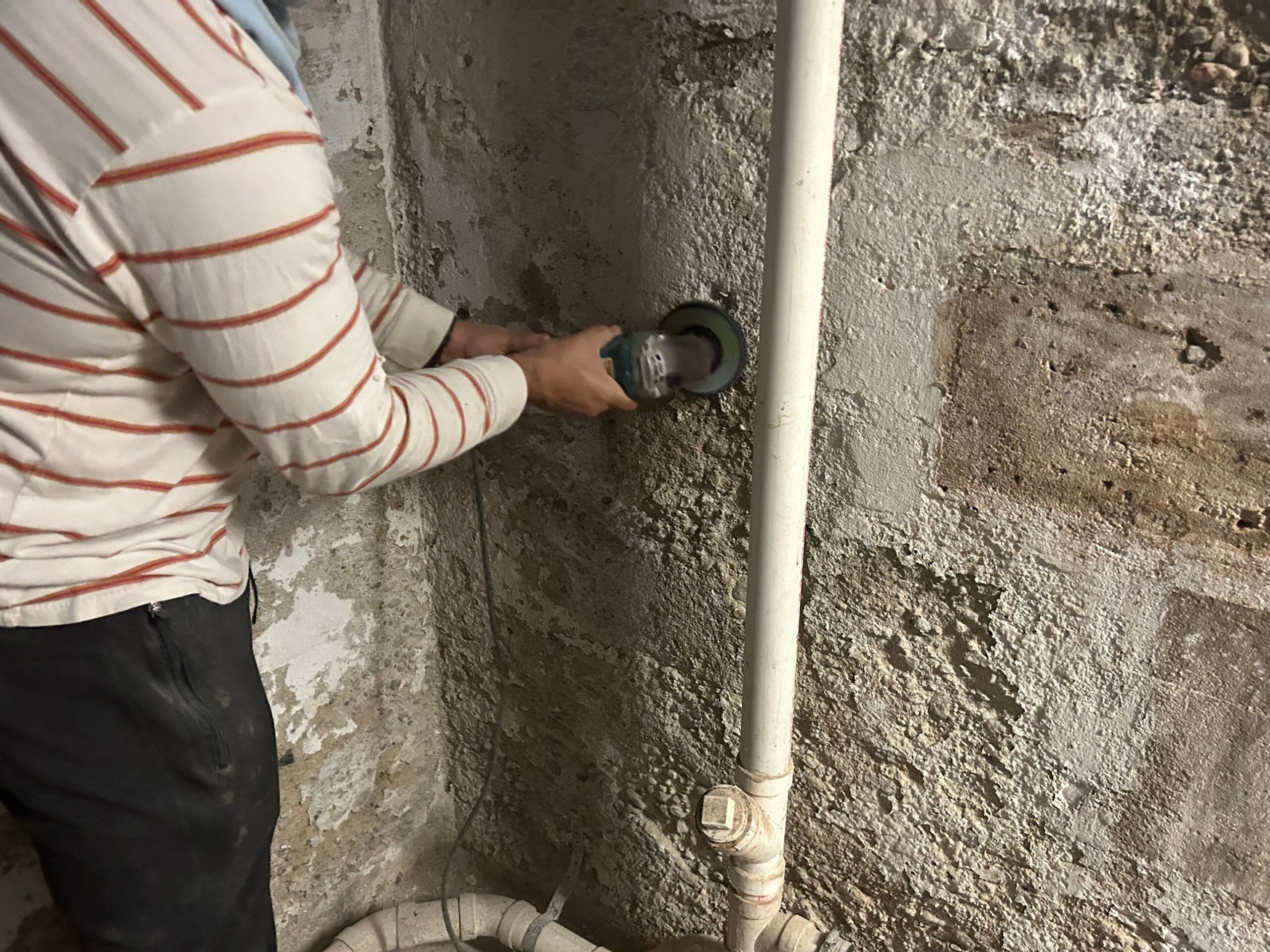
As the old saying goes: “Fail to prepare, prepare to fail”. This goes double for waterproofing a concrete block foundation.
Whatever task you’re undertaking, ensuring that you have the best possible conditions to start with will pay dividends in the long run.
- Whether you’re stuccoing, repointing or using an applied waterproofing solution, the first step is always the same; clear the space. When you’re waterproofing a concrete foundation, you’re going to need access and to move around the space.
- Next, clean your walls down and assess the job. Brushing down or even pressure washing your walls will remove dirt, dust and loose mortar, giving whatever you’re applying the best chance of adhering and letting you see the full extent of work ahead.
- Acquire the right tools and materials for the job. Having the correct tools to complete the job will contribute a better finished product and time saved.
2. Repair Cracks and Fill Gaps
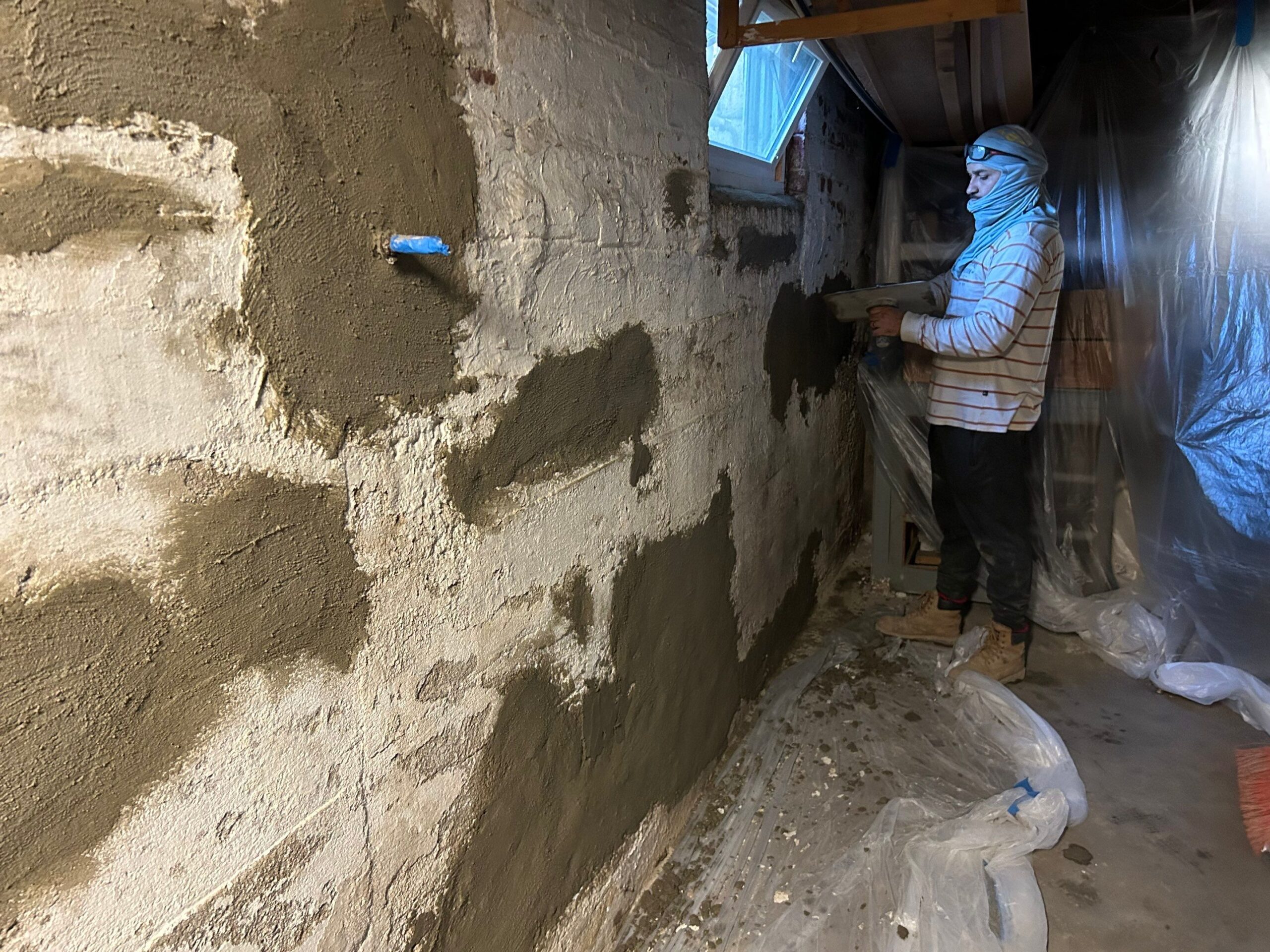
Probably the most obvious way that water can get where it shouldn’t, filling cracks in your basement walls is probably the most obvious step to take when waterproofing concrete block foundations.
There a few major causes of cracks in a cinderblock foundation:
- Settling: For the first few years after being built, your home will move slightly as the weight settles into the foundation. Sometimes, this causes cracks and gaps to form in your block walls.
- Hydrostatic pressure: The earth surrounding your foundation contains groundwater. This pushes up against the walls and, if the pressure is strong enough, can shift some of the blocks, knocking out mortar and letting water in.
- Waterlogged blocks: Once mortar starts to deteriorate between concrete blocks water can seep through the gap and become trapped within the void of the block. This can cause the block to deteriorate and water to seep through.
Where there’s a crack, there’s a path. Water always follows the path of least resistance and a gap in your concrete block walls is a far easier route than through the densely packed earth surrounding them.
3. Use Crystalline Waterproofing
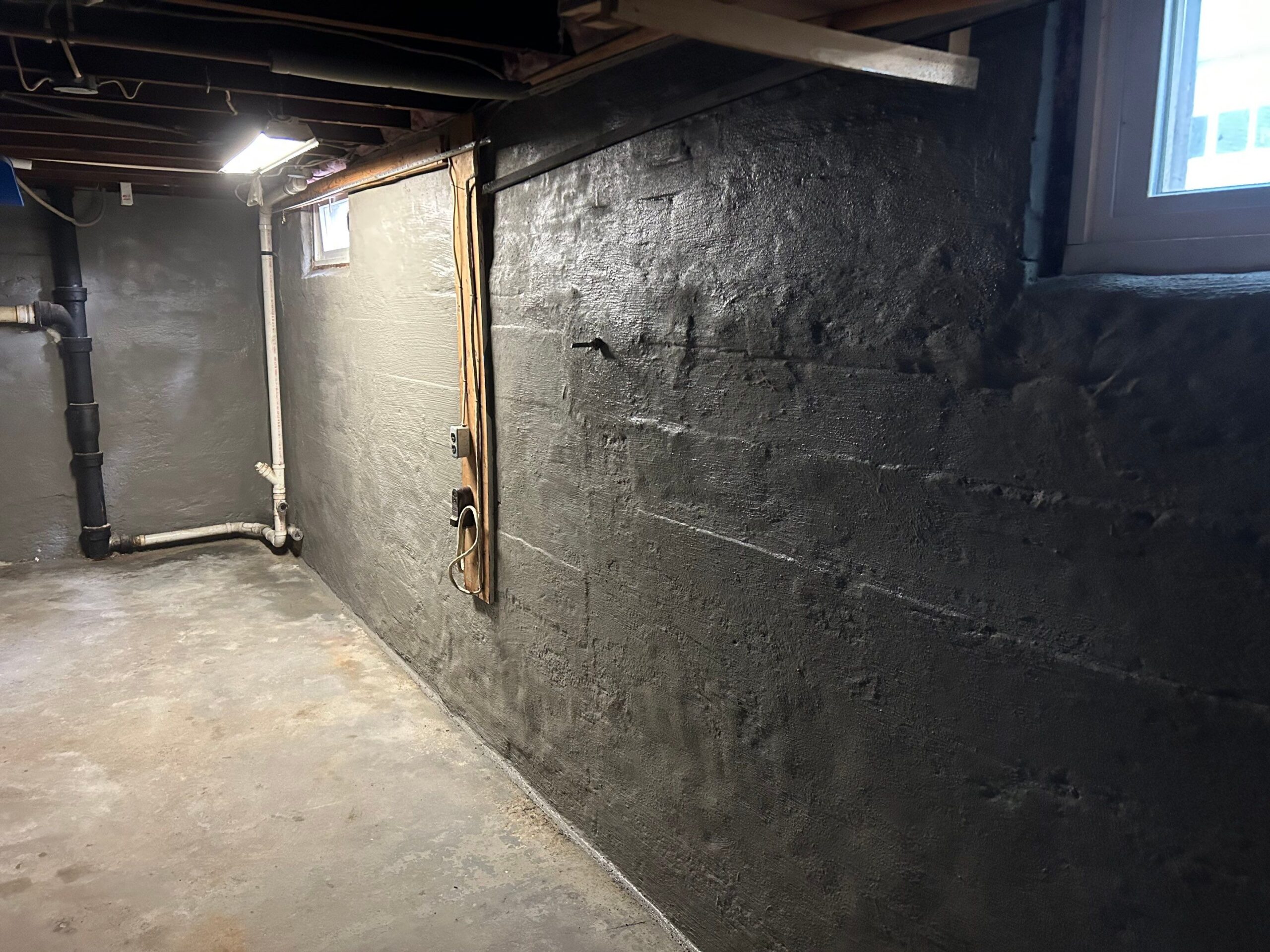
Crystalline waterproofing is a cementitious substance which can effectively waterproof a concrete block foundation. Th product works by penetrating into the concrete and reacting to moisture, forming crystals and blocking any micro-cracks or pathways.
While not ideal for every situation, applying a course of crystalline waterproofing is a fantastic way to deal with mild to moderate dampness and ingress problems long-term.
4. Install An Interior Drain System
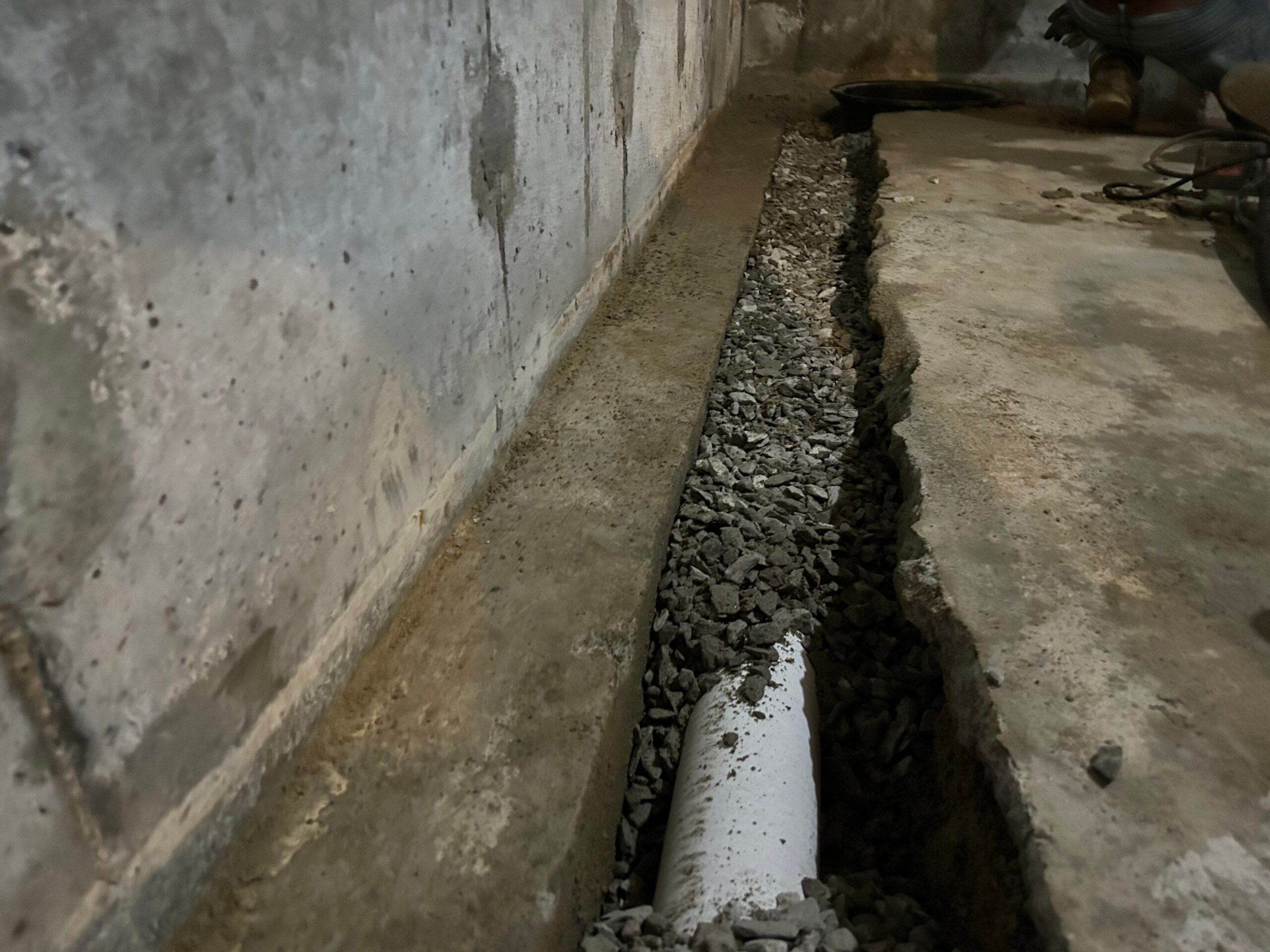
Waterproofing is not about stopping water on your property its about managing where it goes. Your foundation is like a bowl in the earth and that bowl collects water. As water sits and waits to drain, it applies pressure to your basement walls and floor. To reduce that pressure you can install a sump pump and French drain.
- French Drains: these horizontal drainpipes provide an easy route for water to follow, moving it away from your foundation.
- Sump Pumps: A small pump sits in a pit under your basement floor and mechanically moves groundwater out of your basement and away from your home
Weep Holes
Another important factor for any internal drainage system is the installation of weep holes. As we have mentioned previously the void inside a cinderblock can collect water and cause issues with moisture and block deterioration.
Drilling holes in the cinderblock along the trench of a French drain will allow that water to drain directly into your perforated pipes and prevent moisture damage from occurring.
5. Use Vapor Barriers And Cove Diverters
The foundation of your home consists of three components, the footing, the walls, and the floor. The area where these three components meet is a common area for water intrusion, particularly for cinderblock walls.
Water that collects outside of your foundation walls and under your basement slab is pushed through the joints and into your basement by hydrostatic pressure. To prevent water from seeping into your home you must reduce hydrostatic pressure and move water away from that area. You can accomplish that by installing a French drain and sump pump as mentioned above.
We can do our best to manage water but we can’t stop it completely so how do we address the weak points located throughout our cinderblock walls?
Cove Diverters/Dimple Boards
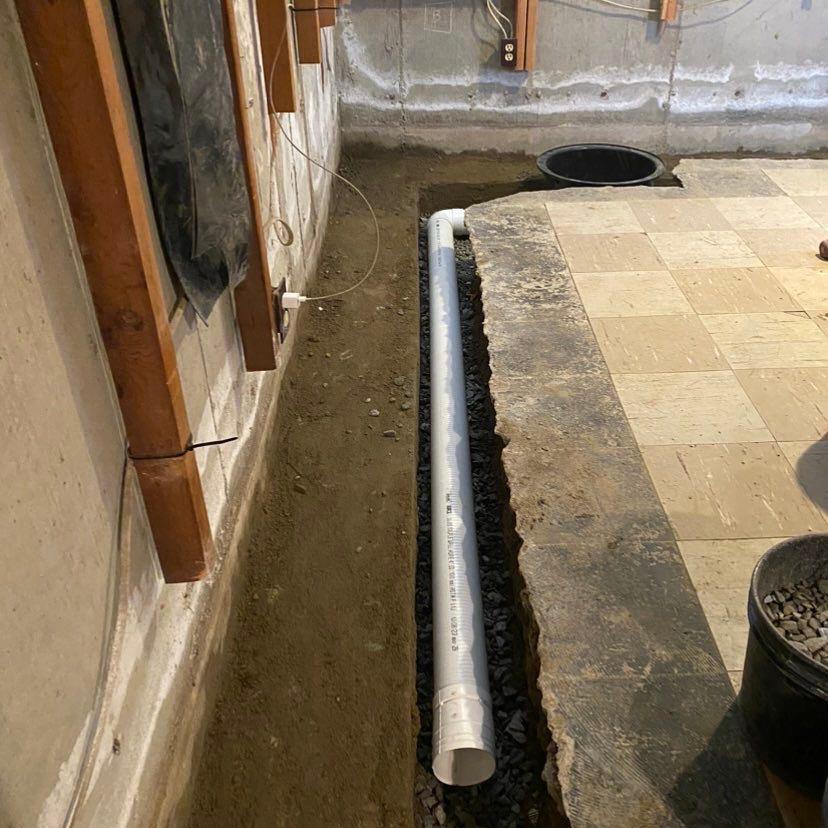

Cove diverters or dimple boards do exactly what they say, divert water from your cove joint (the space between your floor, walls, and footing), towards a French drain, where it can flow harmlessly away.
Vapor Barriers:
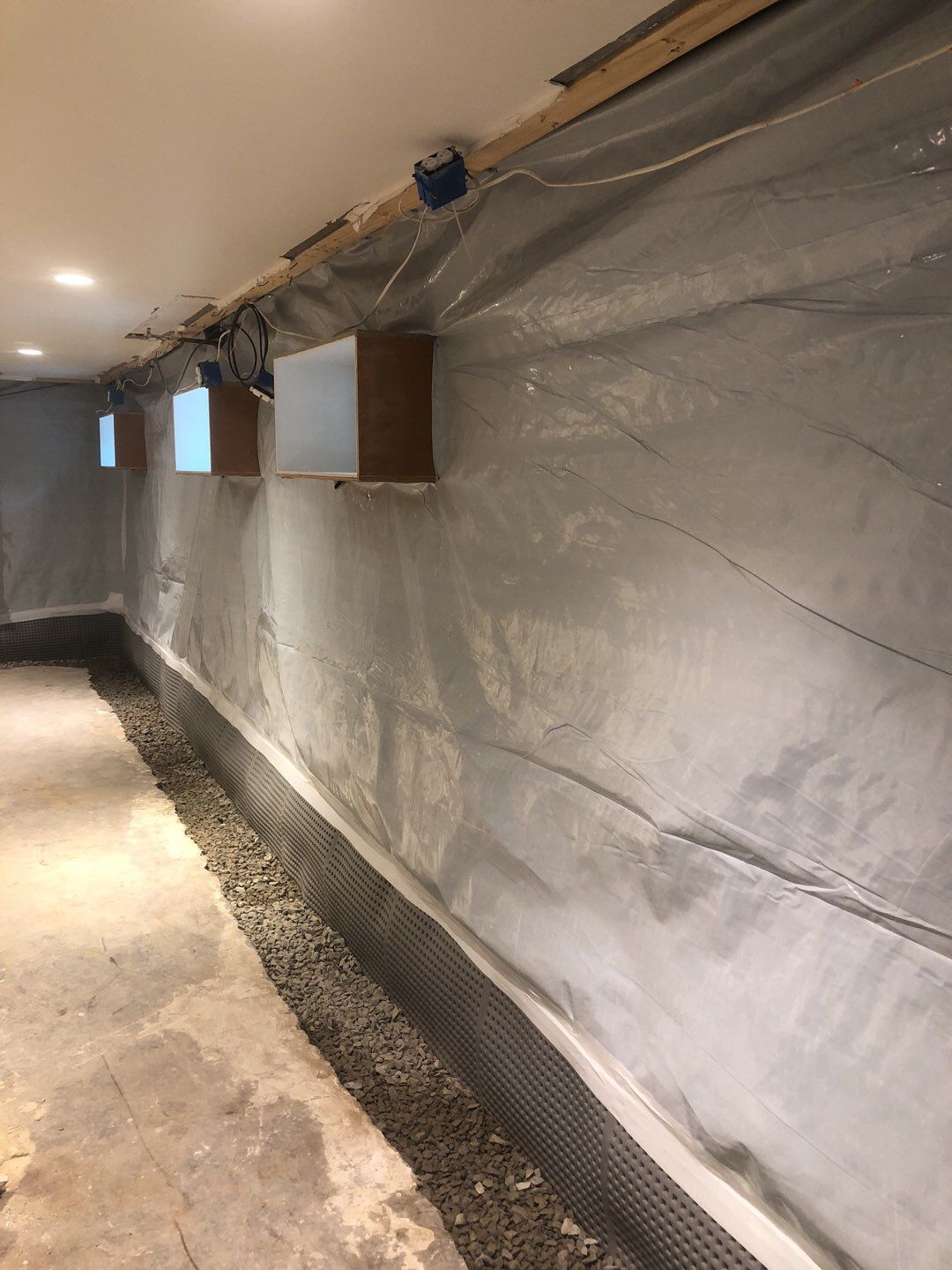
Vapor barriers protect your basement from any moisture that may find it’s way through your foundation walls. In the case of concrete block basement walls there’s a high likelihood that the mortar joints between blocks will deteriorate over time. If this happens your vapor barrier will direct water into the French drain.
6. If you’re stuccoing, don’t seal first
Stucco has been around for a long time. It’s not fundamentally changed since the ancient Egyptians came up with it. It’s strong, cheap, easy to apply and can help to ensure your walls last a longtime.
Searching the internet may lead you to think that you should seal your walls before applying stucco. Not only is there no need, it can actually make things worse.
Concrete block walls provide a great surface for stucco to adhere to without the need for sealants. In fact, sealing may actually make it more likely that water will get trapped between the block wall and the stucco coating, making long term adherence almost impossible.
7. Address the Exterior
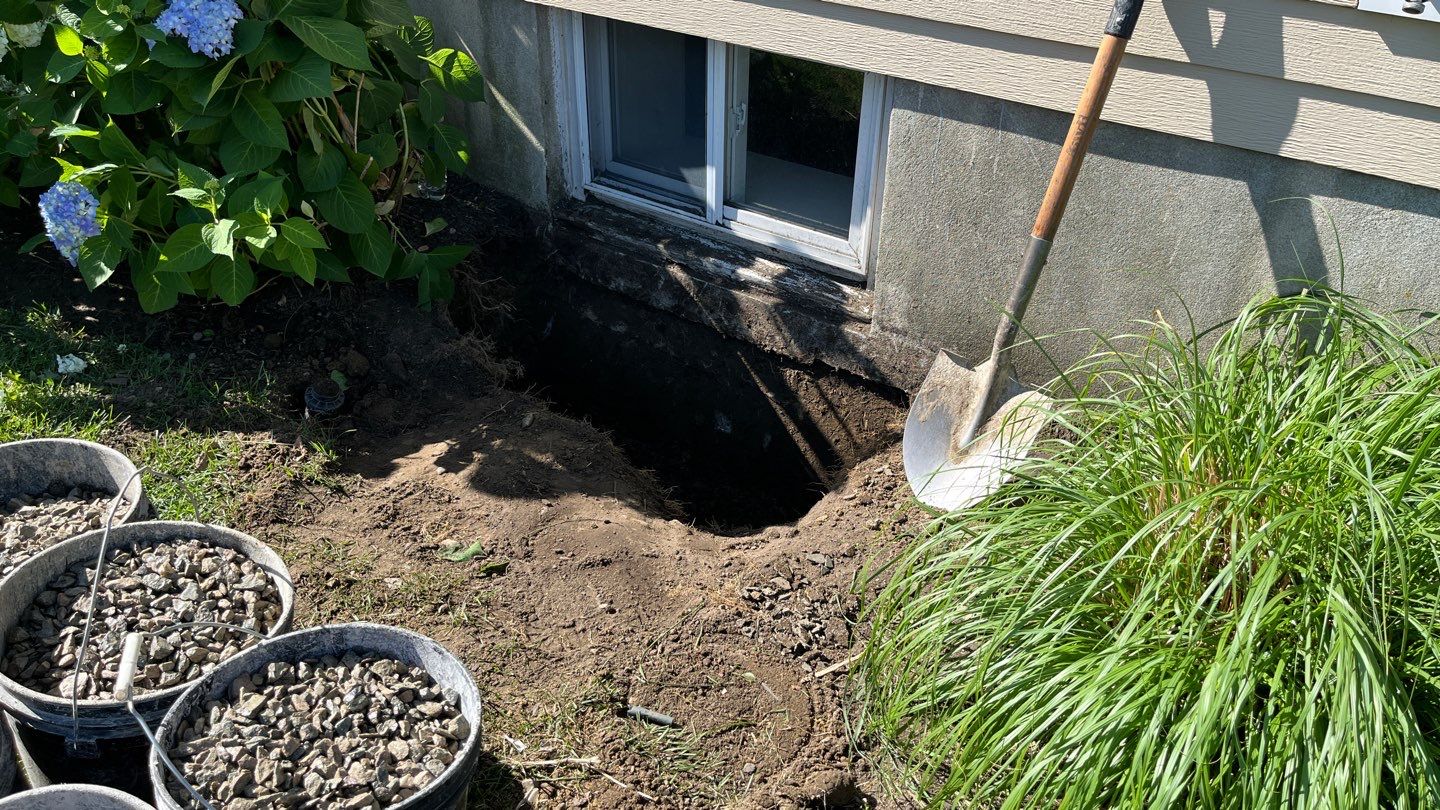
Waterproofing a concrete block foundation doesn’t start and end underground. Your home’s waterproofing is a whole system with each element playing its part.
Keeping everything above ground working properly is just as important as blocking ingress from below. Here are a few things to consider:
- Are your gutter diverting water properly? While it may seem odd to suggest looking up when talking about waterproofing your foundation, gutters mean that water is diverted into proper drainage channels and doesn’t threaten your cinderblock walls.
- Are your window wells clear and allowing water to drain? If water builds up in your basement window wells, it’s only a matter of time before it finds a way through. Properly installing your window wells and keeping them clear of debris will help ensure they drain properly.
- Is your property properly graded allowing water to flow away from your walls rather than pool against them? While it may be a big job, sometimes regrading your property is the only way to avoid serious problems down the line.
While regrading a property is a major undertaking, drains, gutters and windows are all fairly easy to maintain yourself and can work wonders in waterproofing your concrete block foundation.
8. Seal From The Outside
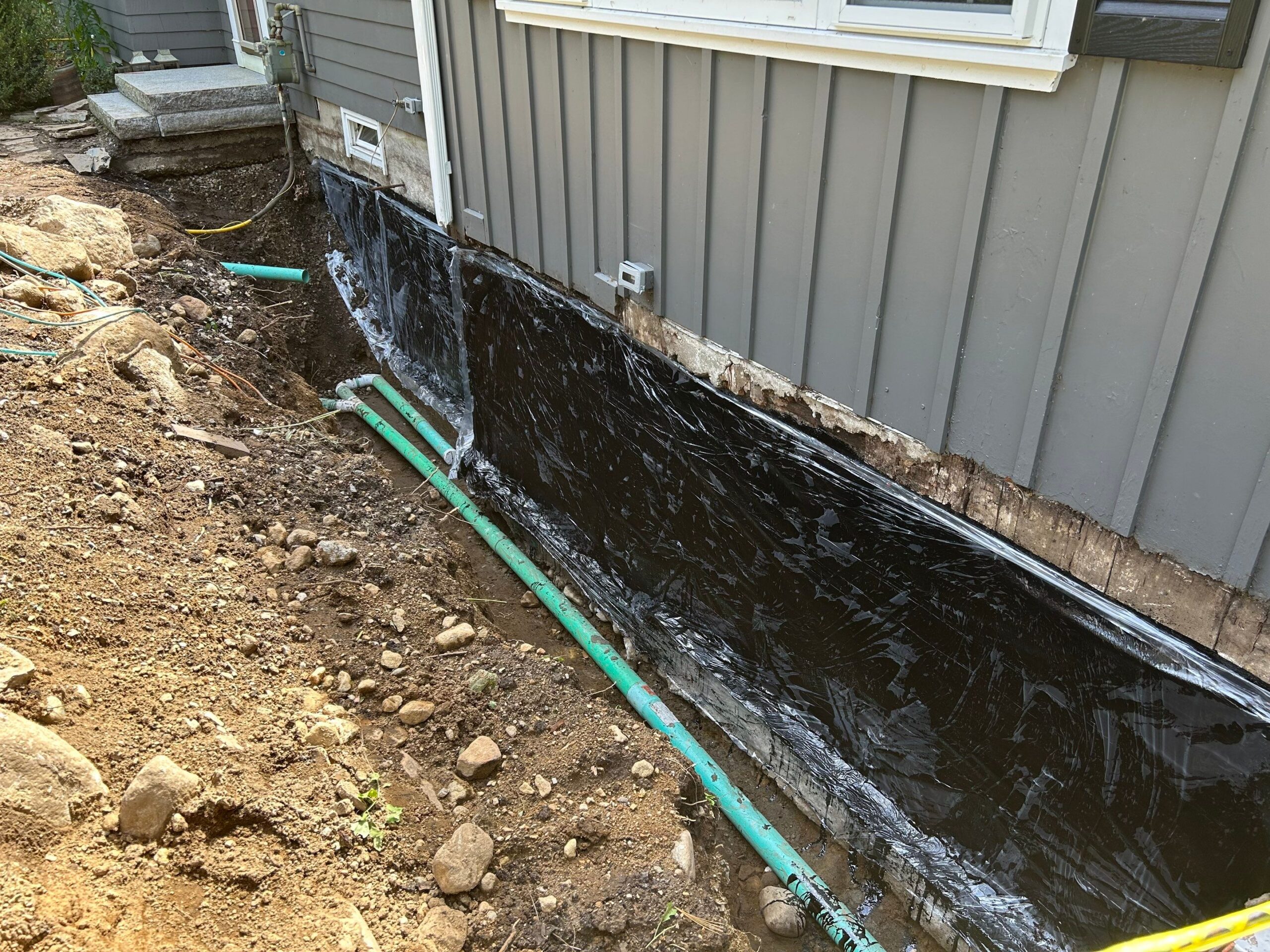
Of course, the best way of waterproofing a concrete block foundation is to keep water out in the first place. While sealing your cinderblock walls from the outside may be a bigger job involving excavators and a lot of work, it’s undeniably the most effective way of stopping water from seeping through your basement walls.
Mortar will eventually start to deteriorate, and as it does it loses its effectiveness as a barrier to water. Over time, tiny micro-cracks and capillaries will form and let in water. Hydrostatic pressure and a cycle of freeze and thaw will eventually make these tiny routes much larger, letting in more moisture.
Concrete block walls have another inherent problem, the cinderblocks themselves are fairly porous and can become waterlogged, cracking and eventually creating voids.
The answer to all these issues? Waterproof your concrete block walls from the outside.
Addressing the exterior waterproofing of your concrete block walls with hydrophobic layers, vapor barrier, and dimple board will avoid water getting where it shouldn’t in the first place and take the pressure off any other methods you may apply on the interior.
Conclusion
Waterproofing concrete block foundations is crucial for maintaining your home’s structural stability and avoiding water damage. Proper preparation, crack repair, and the use of appropriate waterproofing methods like crystalline coatings and exterior seals are essential. Ignoring signs of foundation issues can lead to costly repairs, so proactive maintenance ensures longevity and peace of mind.
